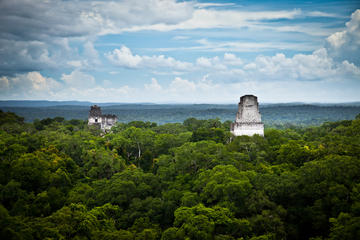
Maya Biosphere Reserve
The vast tropical basin that covers Petén, the northern third of Guatemala, remains largely wild, its jungle-carpeted Mayan cities and traditional indigenous villages left largely unmolested within the protected 2.1 million-hectare (almost 8000 square-mile) Maya Biosphere Reserve, created by UNESCO in 1990.
Home to only 3% of Guatemala’s population, it has become an adventurous ecotourism destination. The reserve comprises Tikal National Park, El Zotz and Naachtún-Dos Lagunas Biotopes (Uaxatún), Yaxhá-Nakum-Naranjo National Park, and Mirador Basin National Monument, along with at least 200 other Mayan ruins, mountains, rivers, cenotes, hiking trails, and 14 lakes, including Lake Petén Itza, gateway to the reserve.
The reserve is part of a protected area stretching from central Mexico, through northern Guatemala and Belize. The Mayan city-studded forests are home to thousands of rare and beautiful species, including jaguar, puma, ocelot, margay, spider monkeys, tapirs, deer, scarlet macaws, and much more. There are dozen of ways to explore the wilderness, most of which are easily arranged from Flores.
Practical Info
The Petén lowlands are classified as either Tropical or Subtropical Moist Broadleaf Forest, which means it will be hot and humid—much more so than Antigua and Lake Atitlán. It is coolest (relatively speaking) from November through February, when you may need a light jacket. Rainy season is steamy, and runs from late May through October; bring mosquito repellant.
Remember that while the reserve is protected on paper, the Guatemalan government has other pressing problems (poverty, narcotrafficking, corruption, etc). They can’t stop all the squatters who hunt, log, and mine the wilderness, or raid unprotected ruins for Mayan artifacts. Use your best judgment as you travel responsibly through the region.
